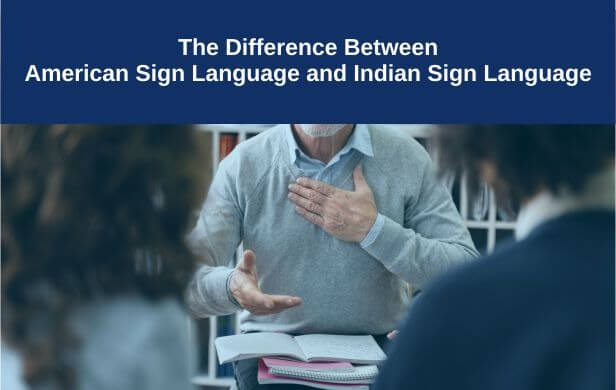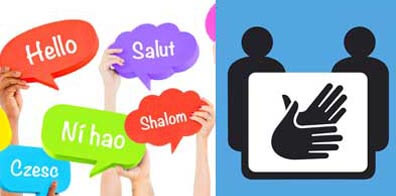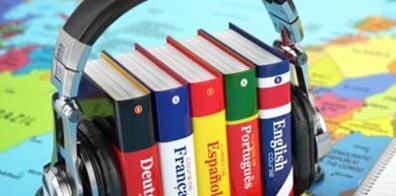
The nature and history behind Sign Language is fascinating. It’s common for people who do not interact with Sign Language regularly to wonder if it is a Universal Language, spanning many countries around the world. In today’s blog, Language Services Bureau answers this question and provides an insight into Sign Language.
There is no single sign language used around the world. Like spoken language, sign language was developed naturally through different groups of people interacting with each other, so there are many varieties. There are somewhere between 138 and 300 different types of Sign Languages used around the globe today.
Interestingly, most countries that share the same spoken language do not necessarily have the same sign language as each other. For example, though English is spoken in the US and India if a Deaf person from the United States flew to Mumbai and met a Deaf person there, they would experience a communication barrier because American Sign Language is completely different from Indian Sign Language. Even the alphabets are different!
Let’s turn back the clock. In the year 1815, Thomas Hopkins Gallaudet traveled from the United States and met Laurent Clerc in France. Clerc was a teacher at the Royal Institutions. Together, they worked on teaching methods for deaf children, and Clerc also came back to US with Gallaudet to be one of the teachers in the new school for the deaf. Therefore, ASL grammar is closer to French Sign Language grammar than any other sign language.
. Although ASL has the same alphabet as English, ASL is not a subset of the English language. American Sign Language was created independently and it has its own linguistic structure. (It is, in fact, descended from Old French Sign Language.) Signs are also not expressed in the same order as words are in English. This is due to the unique grammar and visual nature of the Sign Language. ASL is used by almost a million people in the USA.
. Around 150,000 people in the UK use British Sign Language. BSL evolved at Thomas Braidwood’s school for the deaf in the late 1700s and early 1800s. From there, it spread to Australia and New Zealand. Auslan (Australian Sign Language) and New Zealand Sign Language are therefore quite similar. They use the same grammar, the same manual alphabet, and much of the same vocabulary.
The All India Federation of Deaf estimates around 4 million Deaf People and more than 10 million hard of hearing people in India. ISL signs are classified into three classes:
One-Handed Signs: Only a single dominating hand is used to represent one-handed signs. These signs can be either static or dynamic. Each of the Static and Dynamic is further divided into manual and non-manual signs. Manual Signs are those which include hands, arms, and other body parts, and Nonmanual include facial expressions and eyebrows.
Two-Handed Sign: These signs are represented by both hands. These signs are also classified into two categories: Static and Dynamic. Static signs are further classified into manual and non-manual. Dynamic signs are classified into: Type 0 and Type 1. Type 0 are signs where both hands are in an active position. Type 1 are signs where Right hand is more active than the other hand.
In order to serve and uplift the deaf community, Sign Language can be promoted along with educational, vocational, social, and personal guidance & counseling to deaf people. Once people who can hear learn Sign Language, they can accept deaf children and deaf children mingle with their counterparts which will promote mainstream/inclusive education.
Sign Language can be effectively promoted through media and awareness/sensitization programs for people who are working with the deaf community and involving the deaf community in various school/college activities.
When interacting with Deaf people, Sign Language Interpreters from Language Services Bureau can be present to provide clear communication. We’re here to ensure equal access and connect people!
For any queries related to language translation services. Inquire at our email address below or give us a call today!
info@languageservicesbureau.com
Telephone: +91-20-24470509, +91-82370 60559
Similar articles for you...

आमच्या गेल्या महिन्यातील ब्लॉग मध्ये भाषांचे ज्ञान आवश्यक असणाऱ्या करियर क्षेत्रांची माहिती आपल्याला मिळाली. जिथे भाषेचे ज्ञान फायद्याचे ठरते असे इतर व्यवसाय आपण या महिन्यात पाहुयात.

Posted by : Language Services Bureau

The time it takes to learn a language depends on what you want to do with it– here is a great article about language learning and the kind of expectations you can set about the time required for the same!